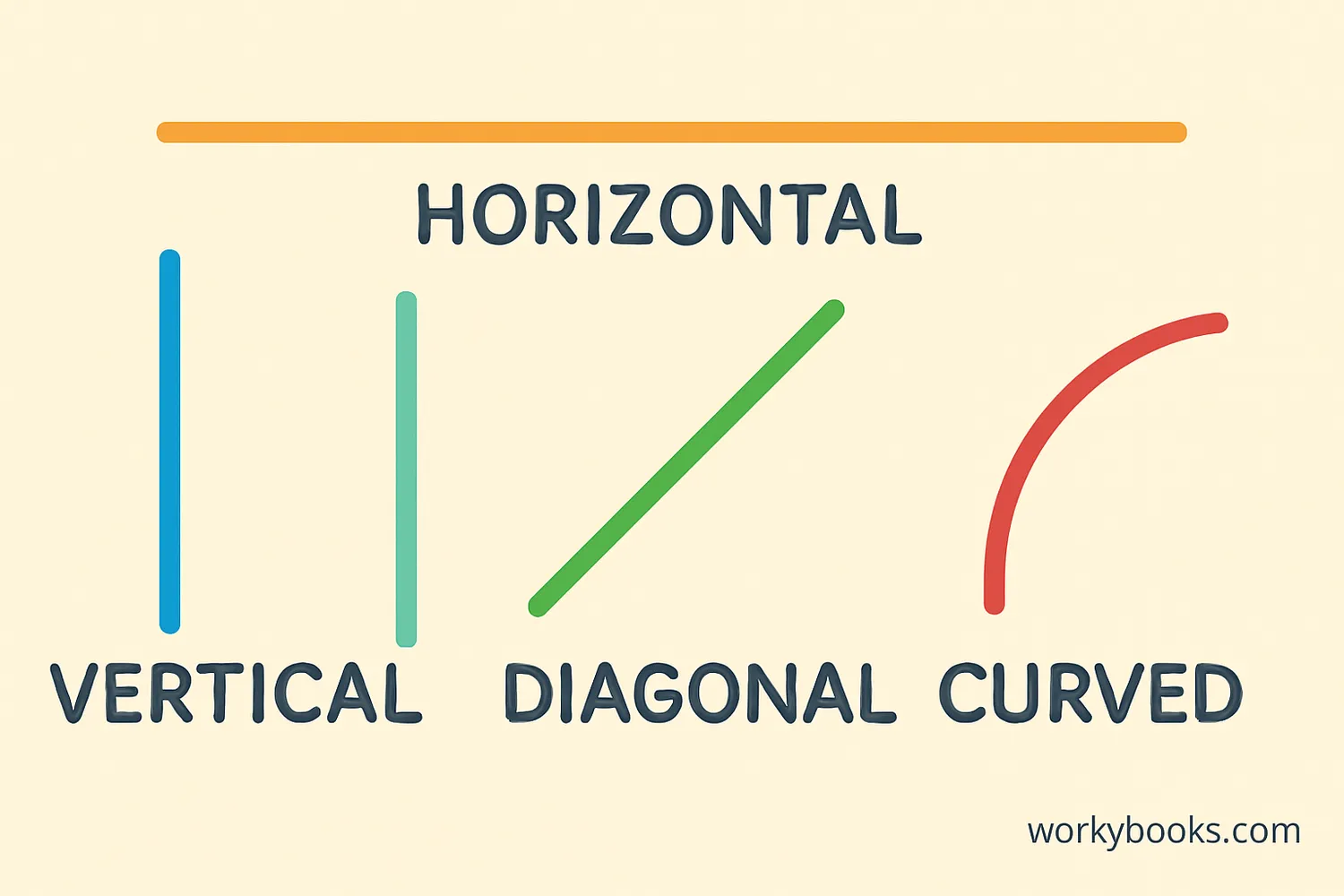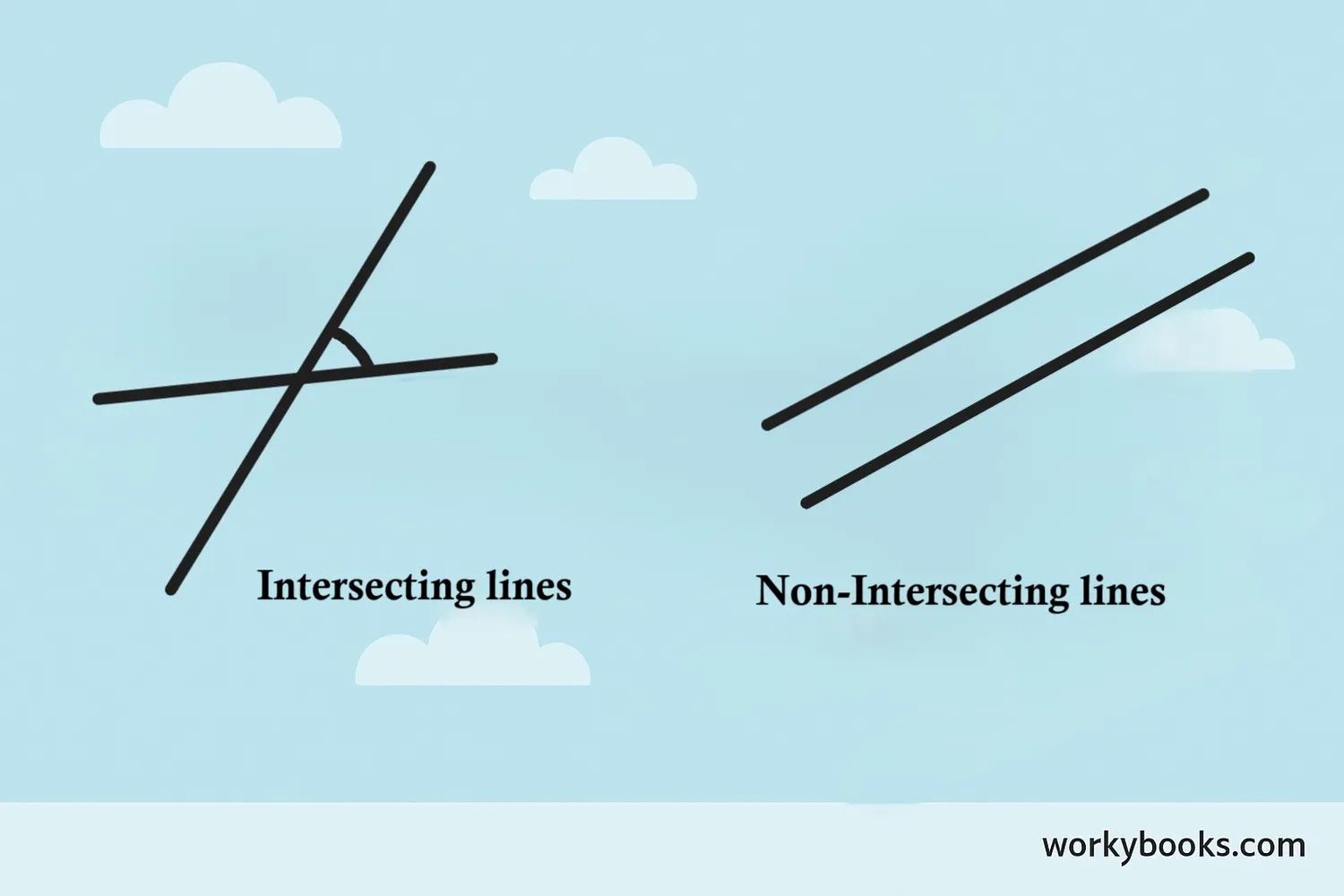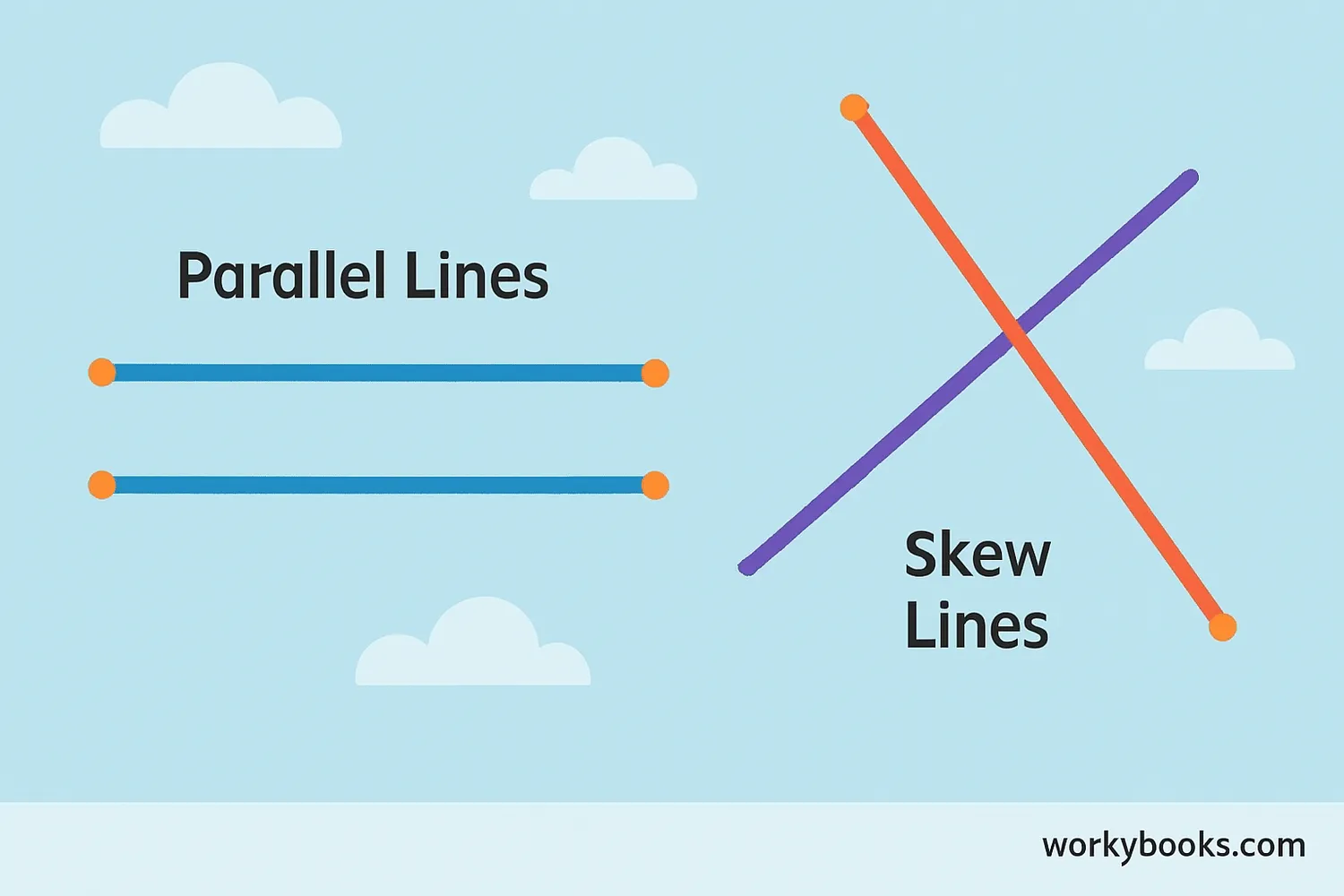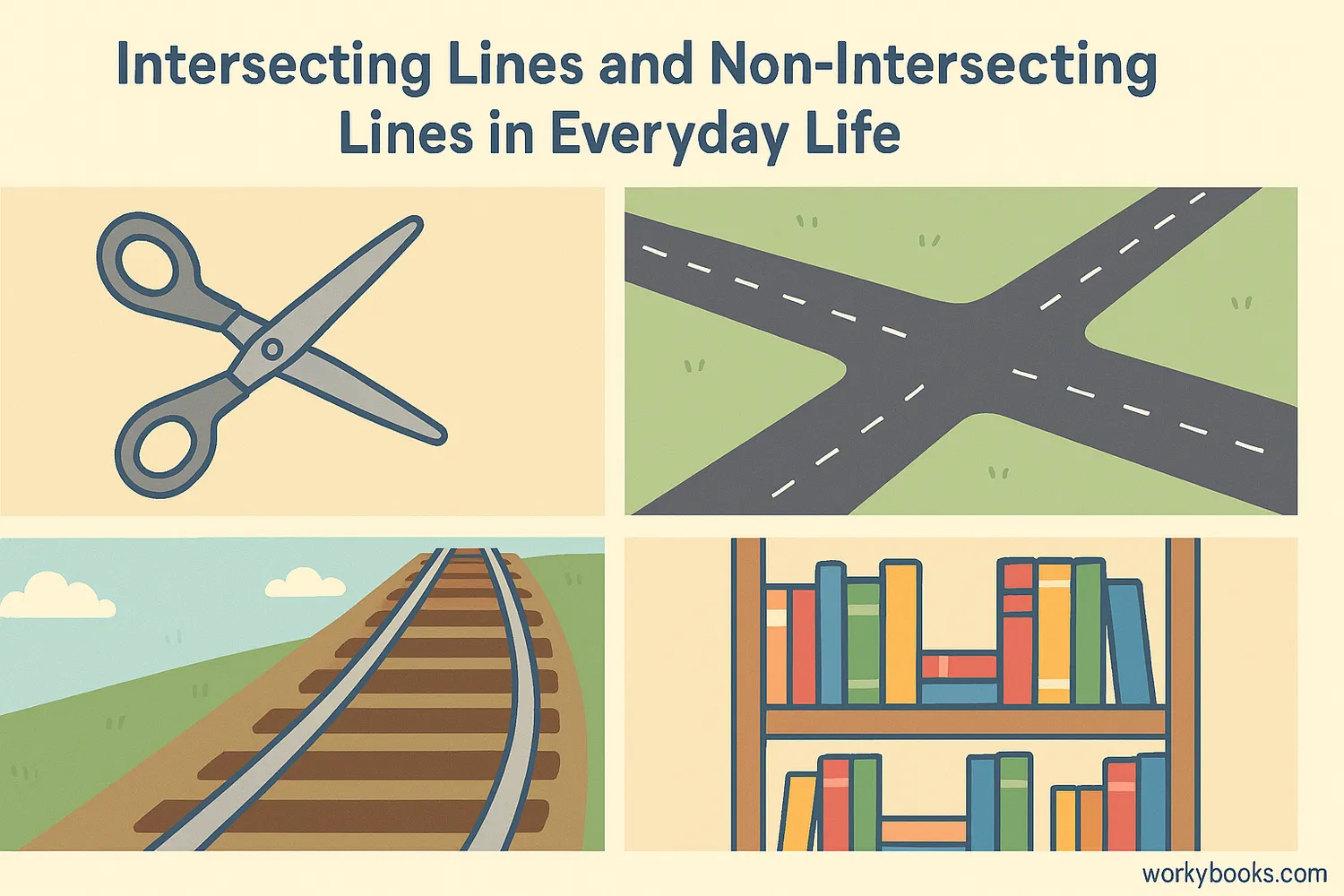Intersecting and Non-intersecting Lines - Definition, Examples, Quiz, FAQ, Trivia
Learn about different types of lines in geometry with fun examples, interactive activities, and quizzes
What are Lines in Geometry?

In geometry, a line is a straight path that goes on forever in both directions. Lines are one of the most basic building blocks of geometry!
Think of a line as a never-ending road with no curves or bends. We use arrows on both ends to show that a line continues forever.
Lines can be drawn in different directions and positions. They can be straight or curved, but in this lesson, we'll focus on straight lines and how they relate to each other.
Key Concept
A line is straight and extends infinitely in both directions. We name lines by any two points on them, like line AB.
Intersecting Lines

Intersecting lines are lines that cross each other at exactly one point. This point is called the point of intersection.
When two lines intersect, they form angles at the point where they cross. These angles can be different sizes - right angles (90 degrees), acute angles (less than 90 degrees), or obtuse angles (more than 90 degrees).
Intersecting lines are everywhere in our daily lives! Think of scissors, crossroads, or the letter "X" - all these are examples of intersecting lines.
Key Property of Intersecting Lines
No matter how they're positioned, if lines cross, they always meet at exactly one point.
Perpendicular Lines
Special intersecting lines that form four right angles (90°). Like the corners of a book or a window.
Oblique Lines
Lines that intersect but don't form right angles. They create acute and obtuse angles instead.
Non-intersecting Lines

Non-intersecting lines are lines that never cross each other. There are two main types of non-intersecting lines:
Parallel lines are lines that lie in the same plane and never meet. They always stay the same distance apart, like railroad tracks or the opposite sides of a rectangle.
Skew lines are lines that are not in the same plane and never meet. Unlike parallel lines, skew lines are not parallel and don't lie on the same flat surface. Imagine a line on the floor and another line on the ceiling that goes in a different direction - these would be skew lines.
Remember
All parallel lines are non-intersecting, but not all non-intersecting lines are parallel. Skew lines also never intersect but aren't parallel.
| Type of Lines | Do They Intersect? | Are They Parallel? | Example |
|---|---|---|---|
| Intersecting | Yes | No | Letter "X" |
| Parallel | No | Yes | Railroad tracks |
| Skew | No | No | One line on floor, another on ceiling |
Real-Life Examples

Let's look for lines in the world around us! Geometry isn't just in math books - it's everywhere we look.
Intersecting lines examples:
• Scissors blades when they cross
• Roads at a cross intersection
• The letter "X" in alphabet blocks
• The corners of picture frames
• Your elbows and knees when they bend
Non-intersecting lines examples:
• Railroad tracks (parallel lines)
• The opposite sides of a book (parallel lines)
• Rungs of a ladder (parallel lines)
• A pole and a power line (skew lines)
• The edge of a table and a hanging light (skew lines)
Next time you're playing or walking outside, try to spot different types of lines around you!
Exploration Activity
Look around your classroom or home. Can you find 3 examples of intersecting lines and 3 examples of non-intersecting lines? Draw them in your notebook!
Lines Knowledge Quiz
Test your knowledge about lines with this 5-question quiz. Choose the correct answer for each question.
Frequently Asked Questions
Here are answers to common questions about lines in geometry:
Geometry Trivia
Discover interesting facts about lines and geometry:
Ancient Geometry
The study of lines and geometry began thousands of years ago! Ancient Egyptians used geometry around 3000 BC to restore field boundaries after the Nile River flooded each year.
Infinite Lines
In geometry, lines are considered to be infinite - they go on forever in both directions. What we draw on paper is actually just a part of a line, which we call a "line segment."
Lines in Nature
While perfect geometric lines are rare in nature, we can find many examples. Spider webs show intersecting lines, honeycombs have parallel lines, and crystals form geometric patterns with lines.
Lines in Art
Artists use different types of lines to create effects. Horizontal lines seem calm, vertical lines suggest strength, and diagonal lines create action or tension. Next time you look at a painting, see what types of lines the artist used!





